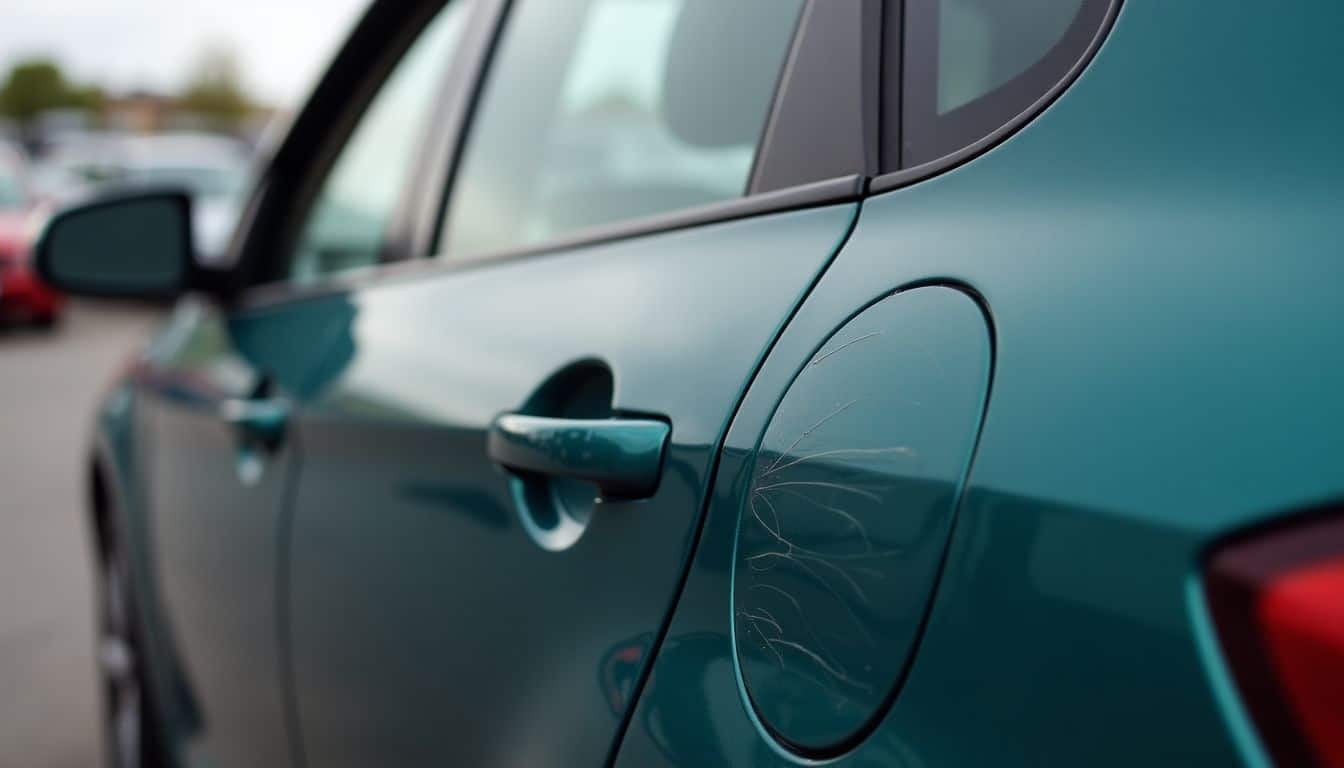What happens if you ding someone’s car? It’s a common worry for anyone in a busy parking lot. In California, leaving without giving your details could lead to hit-and-run charges and serious legal consequences.
This post gives easy, step-by-step tips to handle door dings responsibly—and keep your wallet safe. Don’t drive away yet—read on!
Key Takeaways
Always leave your contact info if you accidentally hit another person’s car—this simple step helps you avoid hit-and-run penalties, which carry fines ranging from $1,000 to $10,000, and even potential jail time.
Snap clear photos of the damage immediately after the accident; these images safeguard your interests if the other driver later exaggerates the issue, and they make your insurance claim simpler.
Report any accident causing over $1,000 in damage to the DMV within ten days—doing so creates an official record, protecting both parties down the line.
Small door dings usually cost around $75 to $100 for repairs through paintless dent removal; compare that amount against your insurance deductible before deciding whether to file a claim.
Choose parking spaces at the ends of rows or far from crowded zones to steer clear of door dings; also, open your own doors gently, and help kids learn to pause for your okay before opening theirs.
Table of Contents
Immediate Steps to Take After Dinging Someone’s Car
You need to act fast after you ding someone’s car to avoid bigger problems later. First, check the damage and look for the car owner nearby to talk about what happened.
Assess the damage
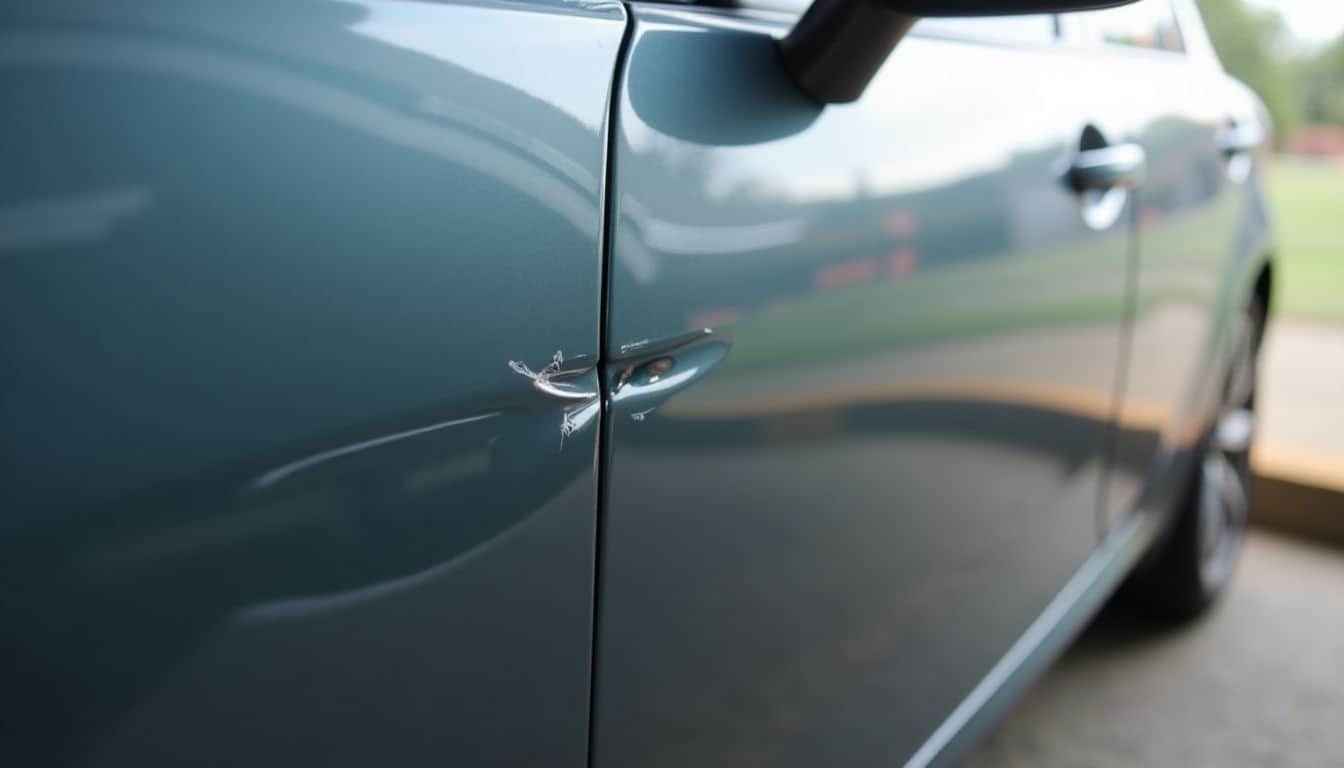
Right off the bat—grab your phone and snap clear photos of the damage, making sure each image includes time and date stamps. Capture all angles carefully, like dents, scratches, and chipped paint.
Even minor fender-benders with little visible damage, typically happening at low speeds, can add up fast. A no-damage accident often occurs at low speeds but should still be documented. According to Consumer Shield, repairs for small dings can run anywhere between $75 and $100, usually for paintless dent removal.
Jot down the license plate number of the other car to avoid confusion or disagreements later on. This quick step keeps both sides honest if there’s confusion about who did what.
If the damage looks bad, see if repairs might cost more than $1,000. Anything over that amount sometimes needs official reporting and might involve different legal steps. Your insurance deductible could be higher than the repair charges.
Getting a speedy repair estimate from a local shop makes deciding easier—whether paying it yourself or going through insurance makes more sense.
The difference between a $100 repair and a hit-and-run charge is simply taking five minutes to do the right thing.
Check if the owner is nearby
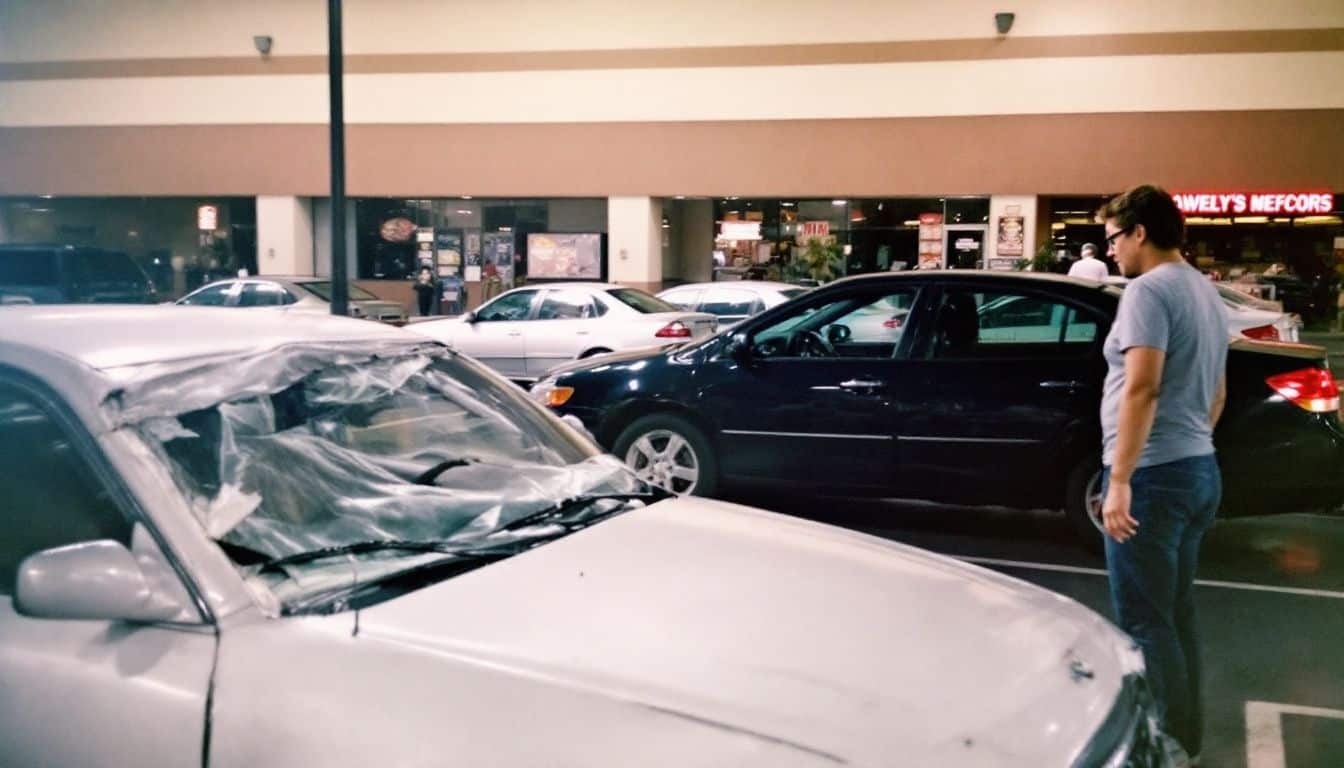
If you accidentally ding someone’s car, immediately try to find the owner. One time, I tapped a parked sedan in the grocery store parking lot—I noticed the driver strolling back with their shopping cart.
Acting fast saved us both plenty of hassle and worry. Take a quick look around the parking area, or glance into nearby stores, to locate the driver. They might still be inside shopping, or maybe just stepped away from their car.
Chatting face-to-face lets you both clearly assess damage and swap personal information immediately. Most folks really appreciate this straightforward honesty, rather than discovering an unexpected dent later on.
The other driver and I exchanged names and phone numbers right then, which made dealing with insurance much easier. Direct communication also keeps you clear of possible hit-and-run charges, along with unwanted attention from police or the Department of Motor Vehicles.
Failing to locate the vehicle owner constitutes leaving the scene of an accident and can lead to severe penalties.
What to Do if the Owner is Absent
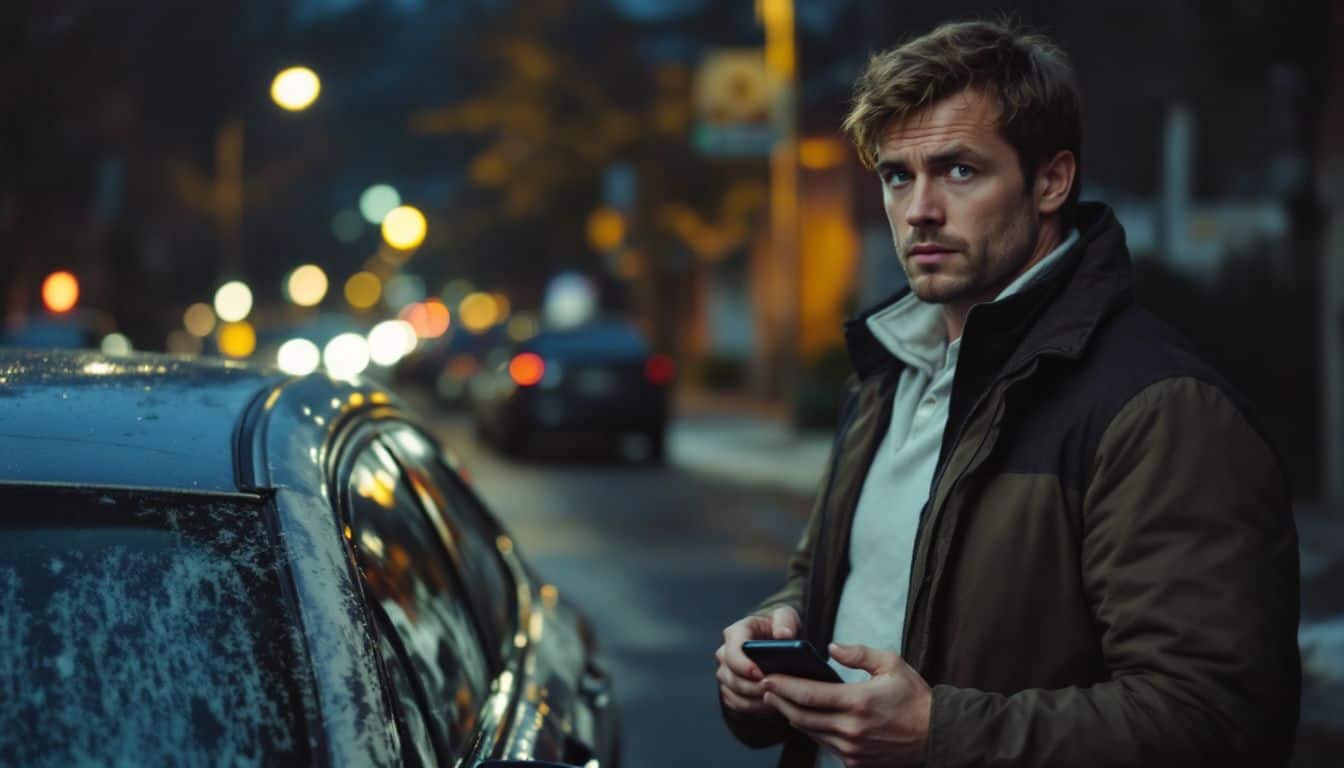
Finding the car owner absent puts you in a tough spot, but you must still do the right thing. You need to take proper steps to avoid legal trouble and keep your wallet safe from hit-and-run charges.
Leave a note with your contact information
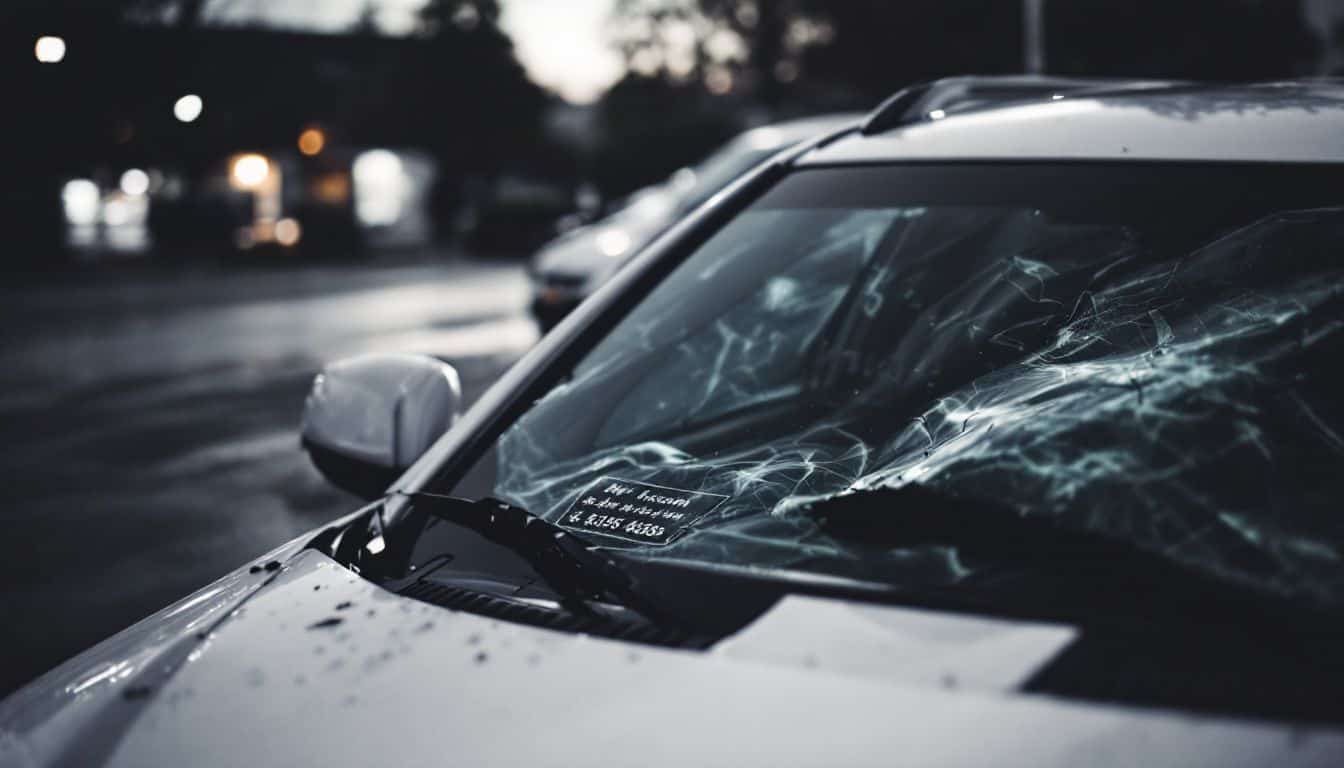
If the vehicle’s owner isn’t nearby, leave a note. It’s the right thing to do—and it’s the law. Clearly print your name, phone number, and a short description of the accident. Securely place your note under the windshield wiper, or somewhere visible yet sheltered from rain.
This simple gesture prevents your accident from becoming a serious “hit and run” charge, which leads to heavy fines and even losing your license.
The true measure of character is what you do when no one is watching.
Pictures are also helpful here. Take clear photos of each car, the damage you caused, and where you left your note. These images protect you if the owner later claims extra damage.
They also serve as evidence for your insurance company, in case a claim is filed against you. In fact, many states legally require these photos—so taking them isn’t just helpful, it’s mandatory.
Take photos of the damage

Grab your phone quickly and snap clear photos of the damage. Take shots from various angles to clearly show what happened to the other person’s vehicle. These images can really save you if the car’s owner tries claiming extra damage later.
Once, I lightly hit a parked car at the grocery store—I took six quick pictures right there, and those photos saved me hundreds, since the owner tried claiming older, unrelated damage as mine.
And always make sure each photo has a timestamp, proving exactly the time the incident took place.
Your insurance company needs these pictures, too. Visual proof lets them clearly see what occurred before they approve your claim. Be sure you also document scratches, dents, or marks on your own car.
Your insurance provider will use these images to figure out responsibility and confirm what’s covered by your policy. Having plenty of visual evidence captured on the spot makes the whole claim process easier and faster.
Legal Obligations
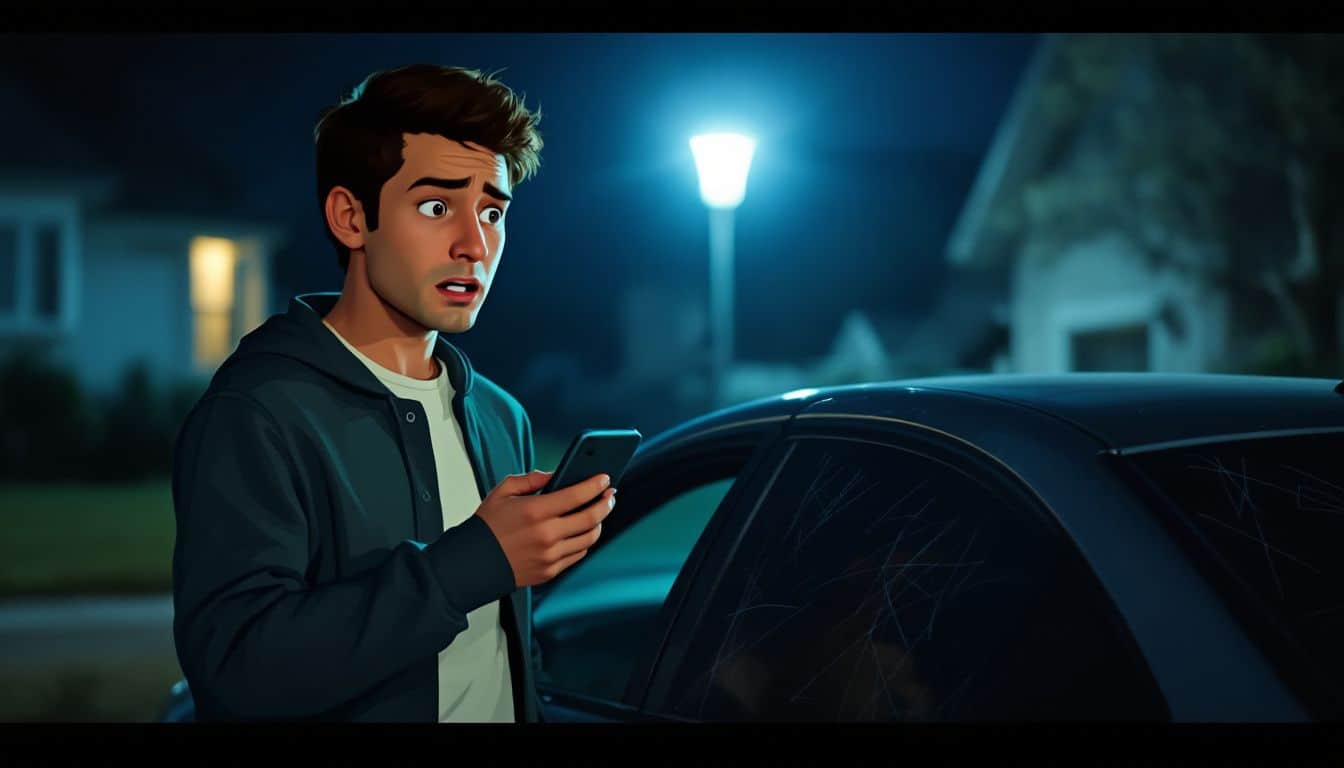
The law requires you to report car dings above certain damage thresholds. Failing to leave your contact info after a ding could lead to hit-and-run charges in many states.
Drivers in states other than California should verify local reporting requirements as laws differ. Check with your local DMV for exact thresholds and reporting timeframes.
Reporting the incident to authorities if required
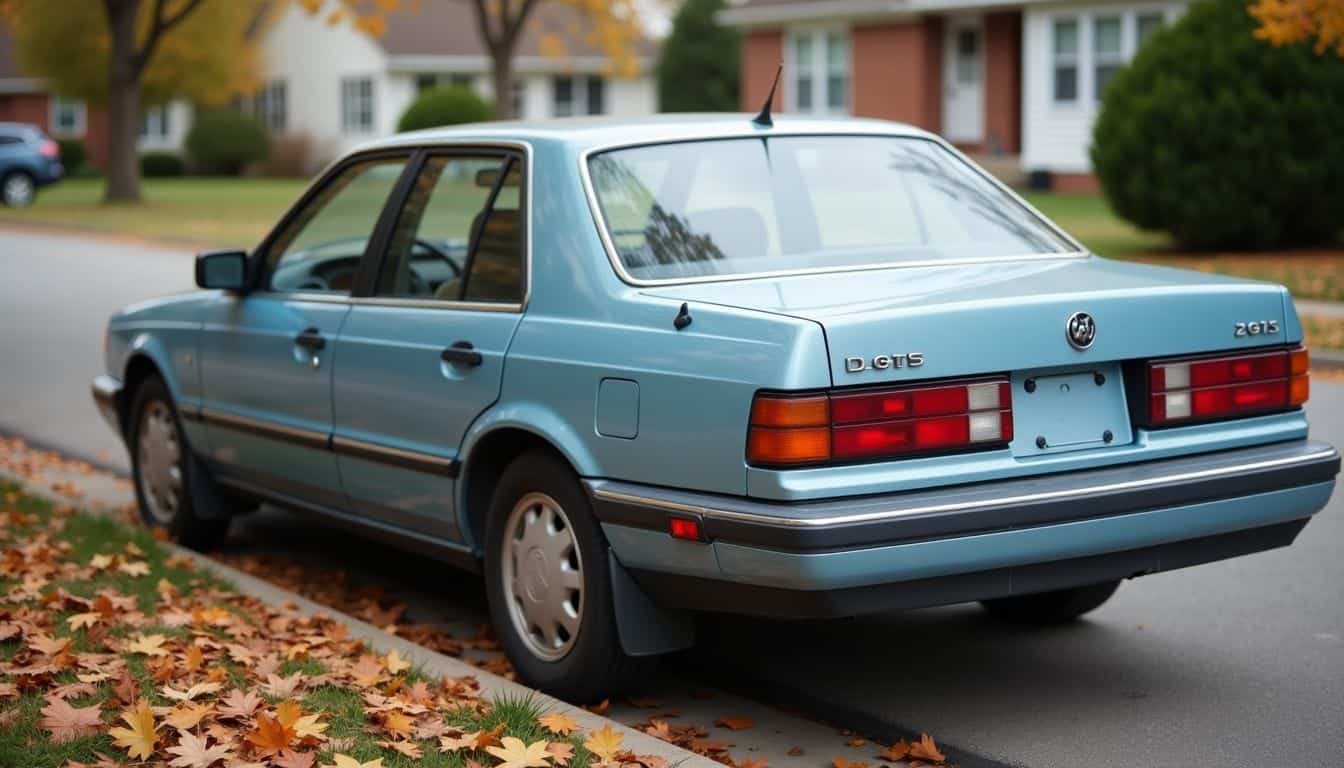
Certain car dents require you to tell the authorities. If damages go over $1,000, you must file a DMV report within ten days—that’s the law. I once bumped a parked SUV, filled out the paperwork, and it helped me avoid trouble later.
Skipping the report can land you with hit-and-run charges, hurting your driving record and emptying your wallet. Plenty of people assume small scratches don’t count, but police reports create an official trail protecting everyone involved.
Also, filing an accident report smooths out insurance claims. Your insurer usually demands proof of the accident before paying for repairs. Just last year, a friend skipped a parking lot scuff report and ran into serious trouble afterward.
At first, the scratch seemed tiny, but repair bills ended up exceeding $1,200. Smart drivers always document incidents properly—this prevents surprise injury claims from popping up weeks later.
Consequences of not leaving a note

After telling the police about an accident, you also have duties toward the other vehicle’s owner. Leaving the scene without giving your contact info causes big legal problems—even if it’s a small scratch.
California law views this action as a hit-and-run, no matter how minor the damage seems. The fines can really add up, ranging from $1,000 all the way to $10,000. I’ve watched a friend face these charges—and the financial hit was rough.
Plus, you risk losing your driver’s license, which means getting to work or running simple errands becomes nearly impossible. Courts are serious about hit-and-run charges; in fact, you could spend up to six months behind bars if the damage is severe enough.
California drivers especially need to watch out, since the state suspends licenses even for failing to report an accident. Legal hassles like these often raise your car insurance premiums, leaving you stuck paying higher rates for years afterward.
Your best choice is always to leave your contact details behind after causing damage to someone’s car.
Hit-and-run charges typically remain on your record and rarely lead to expungements.
Insurance Coverage for Door Dings
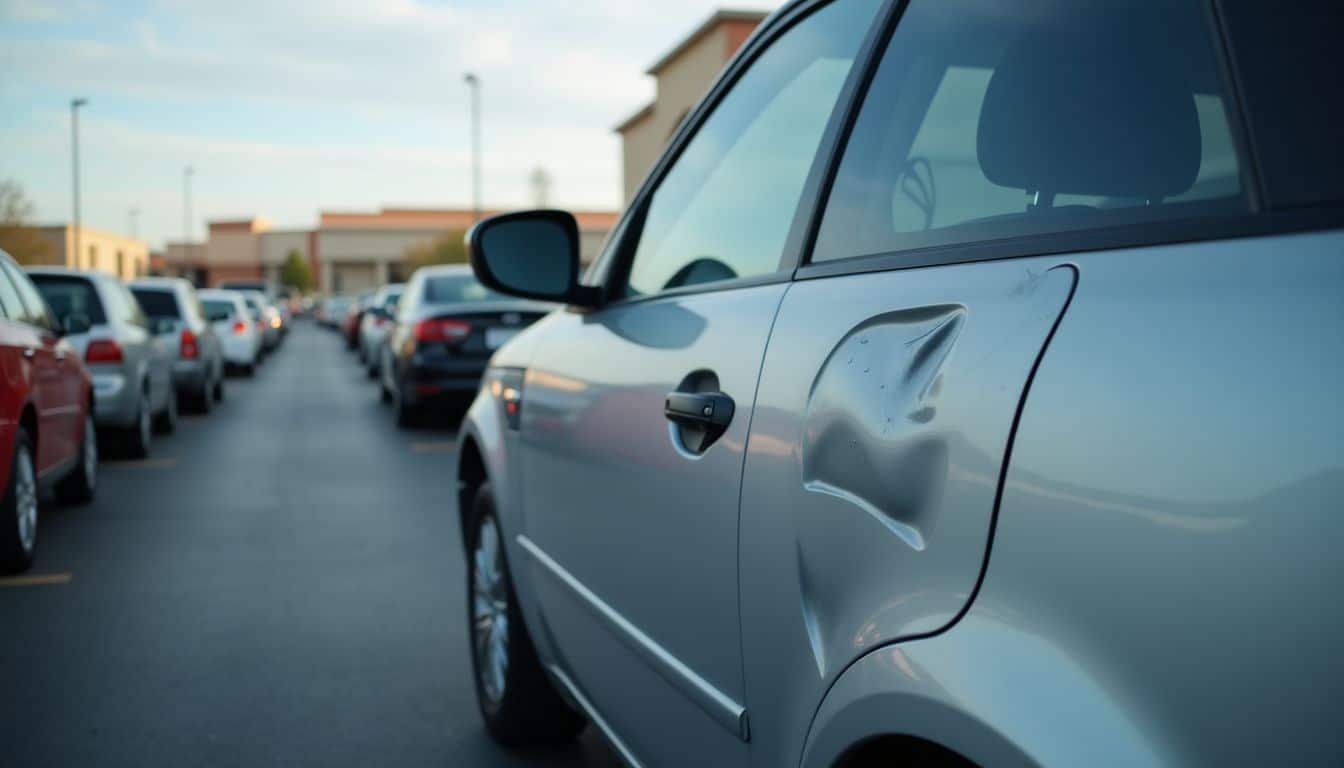
Insurance can save you from big repair bills when you ding someone’s car. Your policy type matters – some plans cover the damage you cause while others pay for fixes to your own vehicle.
Comprehensive coverage vs liability coverage
The right auto policy makes all the difference when you’ve dinged someone’s car. Many guys assume their basic insurance will cover everything, but that’s not always true. Let’s break down what each type of coverage actually does for you.
| Coverage Type | What It Covers | What It Doesn’t Cover |
|---|---|---|
| Comprehensive Coverage | • Non-collision damage | • Damage you cause while driving |
| Liability Coverage | • Damage you cause to others’ vehicles | • Damage to your own car |
| State Minimum Insurance | • Basic liability only | • Vehicle repair costs |
| Full Coverage | • Everything in comprehensive | • Very high deductibles (sometimes) |
State minimum plans don’t cover repairs to vehicles. This means if you ding someone’s car, your basic policy might not help at all. Full protection plans combine both main types of coverage for maximum safety. Most car experts suggest getting more than the bare minimum to avoid cash problems later.
Verify that both the involved drivers hold valid insurance, as complications may arise if the other party is underinsured or uninsured.
Filing a claim for the damage
Filing a claim for car dings can be easy—no need to stress. First, call your insurer to report the incident. Explain clearly what happened, and admit it openly if you’re at fault.
Snap clear photos of the damage, and send them to your insurance agent. Many insurers now have handy mobile apps, making it easy to send pictures right from your phone.
I once dinged a car in the parking lot of a grocery store and discovered a handy tip. If you and the other driver share the same insurance provider, your company may waive your deductible altogether.
Saved myself a few hundred dollars that time! For smaller dents, first check if the repair cost is lower than your policy deductible. Sometimes, handling it yourself just makes better financial sense.
It might be cheaper in the long run, rather than risking higher premiums later.
Detailed Insurance Claim Procedures
Follow these steps for a smooth insurance claim process:
- Call your insurer immediately to report the incident.
- Provide clear photos with timestamps from all angles.
- Fill out the claim form accurately and submit it promptly.
- Keep copies of all documentation and receipts for reference.
- If any personal injuries occur, seek medical care without delay.
What Happens if You Don’t Report the Incident

Ignoring a car ding can lead to serious legal trouble beyond just a damaged vehicle. You might face hit-and-run charges that stick to your driving record and cost thousands in fines.
Potential hit-and-run charges
Leaving after hitting someone’s car—even for something as tiny as a door ding—can land you in serious trouble. In California, Vehicle Code 20002 clearly states that drivers must report all accidents, no matter how minor.
If you drive off without reporting it, authorities treat this as a hit-and-run. Penalties for this offense can get pretty severe—you could end up spending up to six months behind bars and paying fines.
Plus, your insurance company will probably raise your rates, making your troubles even worse.
For the police to charge you, they’ll first need proof that an accident occurred. Evidence can come from photographs, witnesses, or security camera footage. These days, lots of parking lots have cameras, making it tougher than ever to slip away unnoticed.
Leaving without addressing the damage quickly escalates a simple insurance issue into criminal charges for negligence. Your best choice is always leaving a note with your contact info or waiting until the owner gets back.
Penalties and fines
Driving off after damaging a person’s vehicle can empty your wallet fast. Under the law, this counts as a hit-and-run, triggering fines from $1,000 all the way to $10,000. I’ve watched a friend face these charges—and the financial hit was rough.
Plus, you risk losing your driver’s license, which means getting to work or running simple errands becomes nearly impossible. Courts are serious about hit-and-run charges; in fact, you could spend up to six months behind bars if the damage is severe enough.
California drivers especially need to watch out, since the state suspends licenses even for failing to report an accident. Legal hassles like these often raise your car insurance premiums, leaving you stuck paying higher rates for years afterward.
Your best choice is always to leave your contact details behind after causing damage to someone’s car.
Hit-and-run charges typically remain on your record and rarely lead to expungements.
Tips to Avoid Dinging Cars in the Future
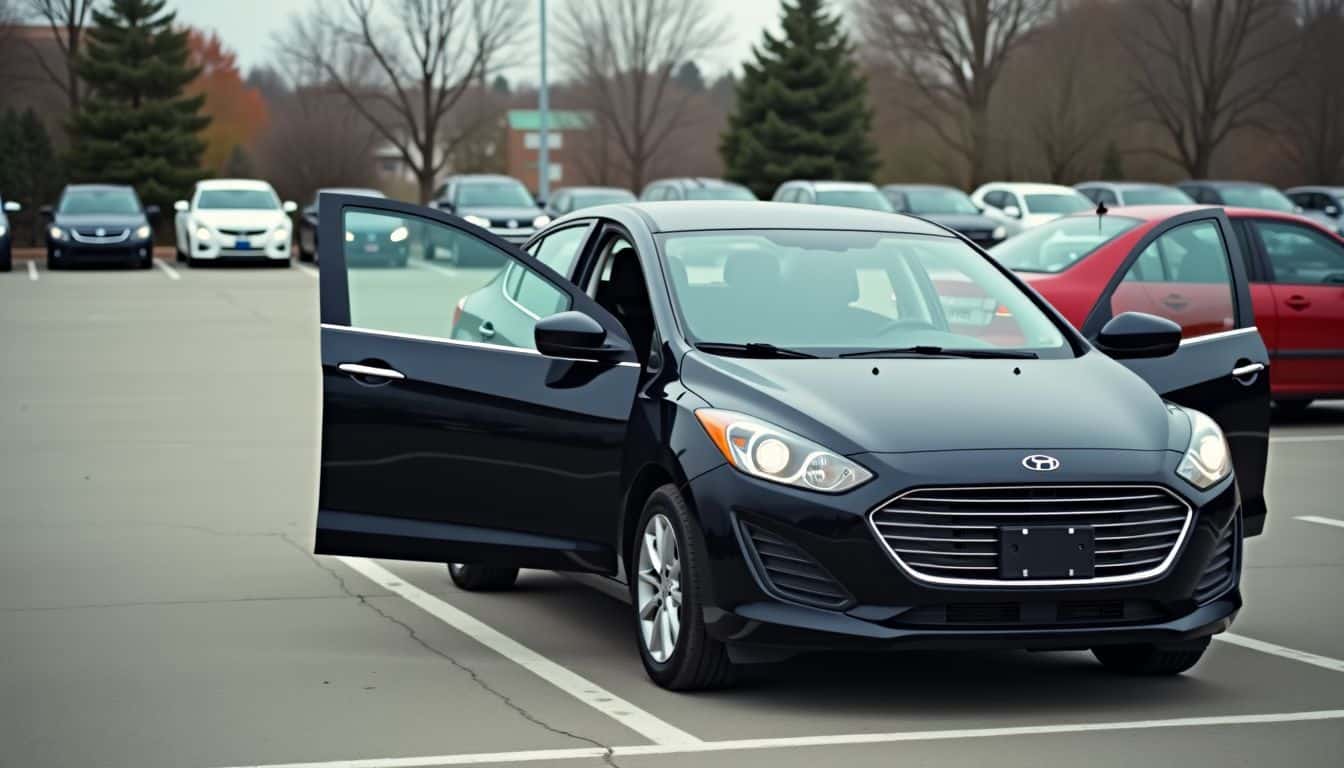
Smart parking habits can save you from costly door dings and angry car owners. Park in less crowded spots and open your door with care to avoid hitting nearby vehicles.
Parking strategies
Picking the perfect parking space can protect your car from costly scratches and dings. Whenever possible, I pick an end spot in the parking lot, reducing my car’s contact with nearby vehicles.
Just that tiny adjustment can slash your chance of door damage by half. Sure, parking farther from store entries adds a brief walk—but your car stays safely away from busy foot and vehicle traffic.
Take extra caution near SUVs or trucks; their taller doors can easily scrape your roof or windows, creating an accident risk you don’t need.
Covered parking spots offer ideal protection from harsh weather and careless drivers alike. Drivers of luxury cars may want to use a canvas car cover for added peace of mind in public places.
I learned this the hard way after receiving a painful $900 repair bill from a minor ding someone didn’t bother to report. Your vehicle is an important investment—so giving it breathing room from other cars can serve as free protection against paint damage, dents, or personal injury claims your comprehensive insurance may not entirely pay for.
Being mindful while opening doors
Smart parking habits reduce door dings—but your actions after parking count even more. Slowly opening your car door reduces collision risks. This simple habit helps prevent accidental contact with other parked cars, saving you from costly paintless dent repairs.
Pause for a second, glance around carefully, then open the door. A quick check like this protects both your vehicle and cars next to you.
Clear rules help kids safely handle car doors, too. Teach your children to wait patiently until you give the go-ahead. Guide them on holding doors as they exit, preventing the door from swinging wide.
Adjusting the car slightly after parking also creates valuable extra space. Shifting position within the parking spot gives you more room, making exiting safer and cheaper—avoiding repair bills from dings insurance won’t cover.
People Also Ask
What should I do if I ding someone’s car in a parking lot?
Stay at the scene—driving away is illegal. Try to find the owner of the other car; if you can’t, leave your contact details clearly written on a note, tucked securely under their windshield wipers. Even if the damage looks small, inform your insurance company promptly so they can document the incident.
Will my insurance rates go up after a minor car accident?
They might—especially if you’re at fault. Insurance companies consider even minor incidents when deciding how risky you are to insure. Also, your coverage may help pay bills if the other driver has little or no insurance, protecting you from bigger expenses.
Do I need a lawyer for a small fender bender?
You probably won’t need an attorney for a minor bump without injuries. But if there’s confusion or disagreement about who’s responsible, or someone says they’re hurt, hiring a lawyer could safeguard your interests. Talking privately with your lawyer is confidential, giving you reliable protection and sound advice.
What if I hit a car while using my vehicle’s autopilot feature?
You’re on the hook for damages—even if autopilot was on. These automated features aren’t flawless and don’t eliminate your responsibility as a driver. It’s different from vehicle defect cases, where lemon laws apply—technology doesn’t replace your job of watching the road carefully.
Disclaimer: This article is for informational purposes only and is not a substitute for legal or insurance advice. Consult a qualified attorney or insurance professional regarding matters related to car accidents, leaving the scene of an accident, personal injuries, and insurance coverage. Communication with legal professionals is protected by attorney-client privilege. The author has extensive experience in auto repair and insurance claims; this article does not constitute professional advice.
References
https://www.diablodents.com/what-to-do-when-someone-dings-your-car/
https://www.freeway.com/knowledge-center/auto/steps-to-take-when-someone-dings-and-dents-your-car/
https://www.pricescope.com/community/threads/you-ding-someones-car-do-you-leave-a-note-ethical-question.74308/ (2007-12-13)
https://getjerry.com/car-help/what-should-i-do-if-i-see-someone-ding-my-car/
https://www.keithstonelaw.com/2024/06/16/in-california-do-you-have-to-report-hitting-a-parked-vehicle/ (2024-06-16)
https://www.avvo.com/legal-answers/we-may-have-dented-other-car-small-dent-and-ran-aw-455047.html
https://www.justanswer.com/criminal-law/mwjir-accidentally-hit-passenger-door-car-door-no.html
https://www.bankrate.com/insurance/car/does-car-insurance-cover-scratches-and-dents/
https://www.selectquote.com/auto-and-home-insurance/articles/filing-scratch-or-dent-claim
https://www.statefarm.com/simple-insights/auto-and-vehicles/how-to-avoid-door-dings-in-parking-lots
https://www.primetimepdr.com/parking-lot-tips-to-avoid-door-dings/
https://www.dentwizard.com/insights/how-to-prevent-door-dings/ (2024-06-26)
https://www.maaco.com/blog/how-to-prevent-car-door-dings-and-dents-8-tips/ (2023-12-18)
